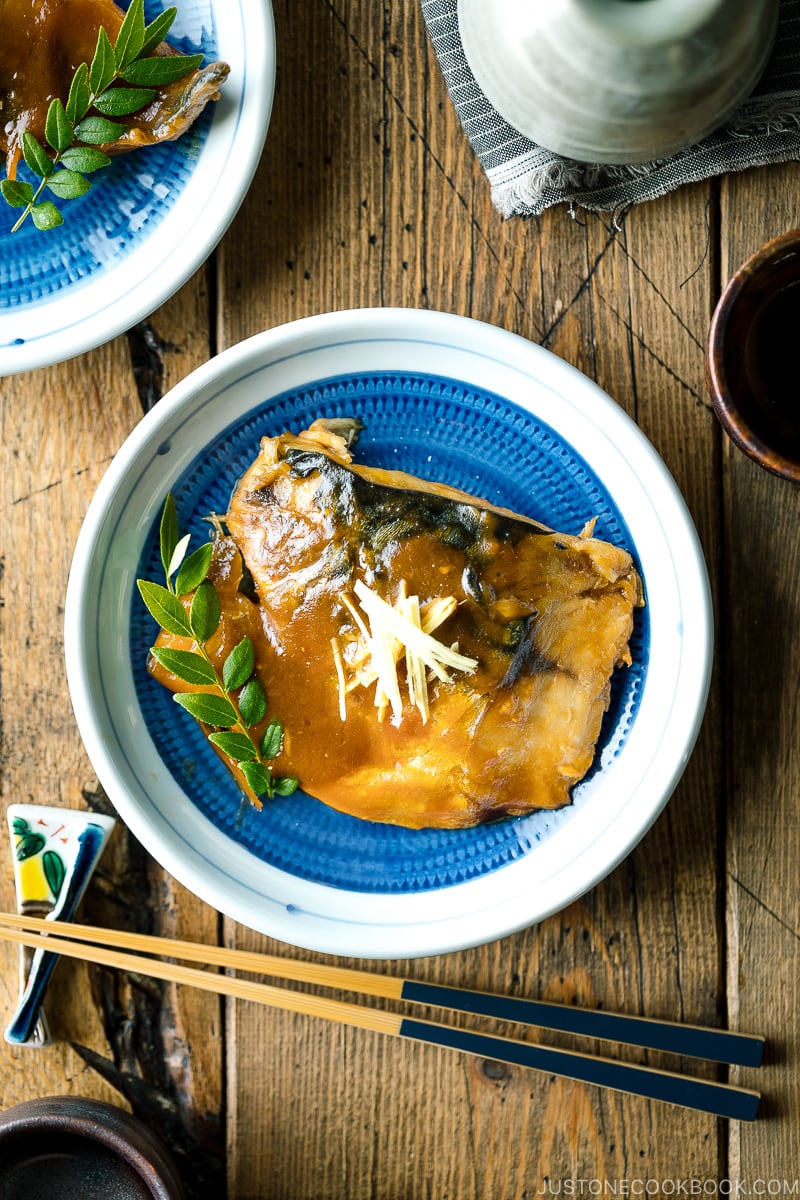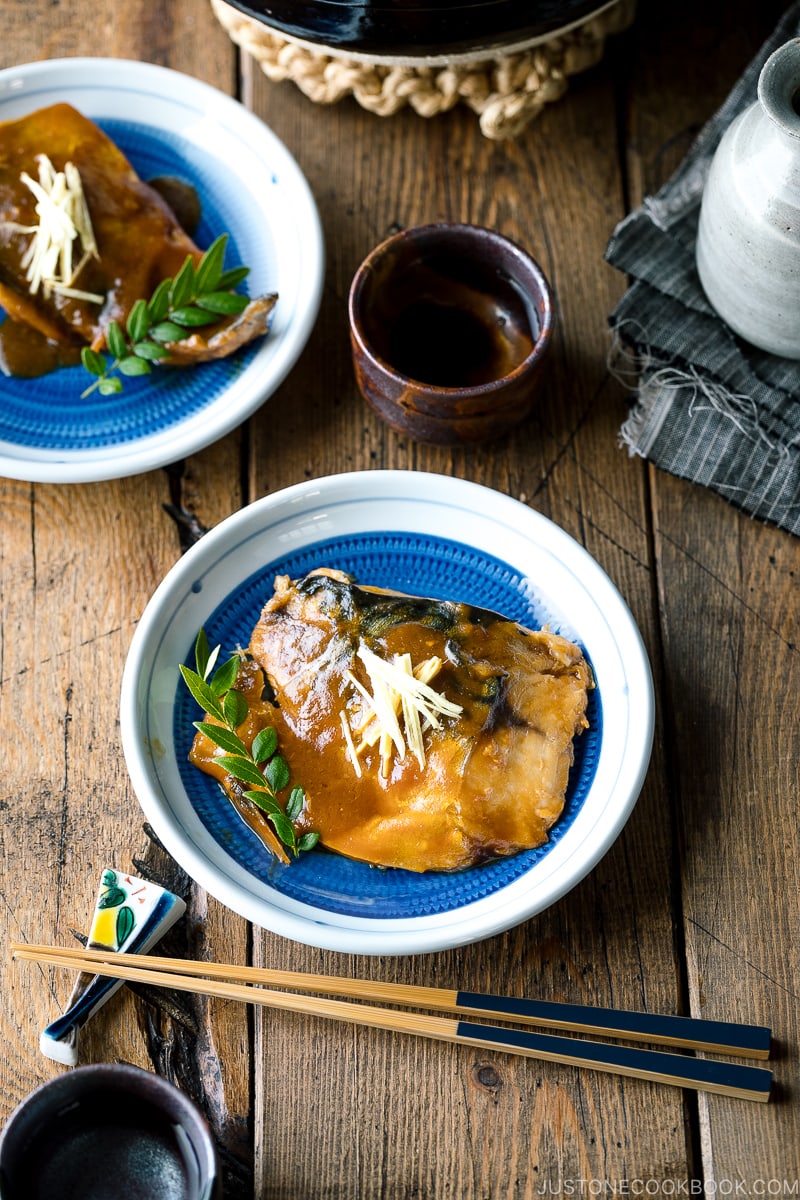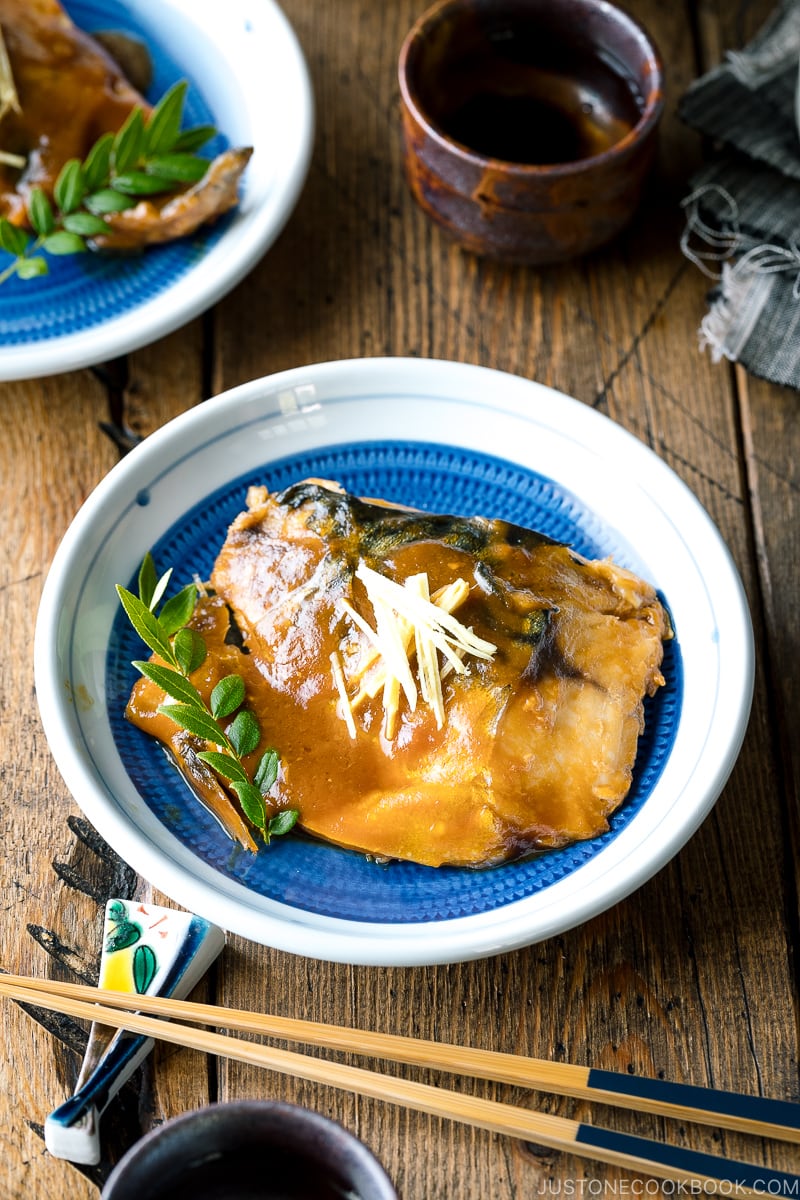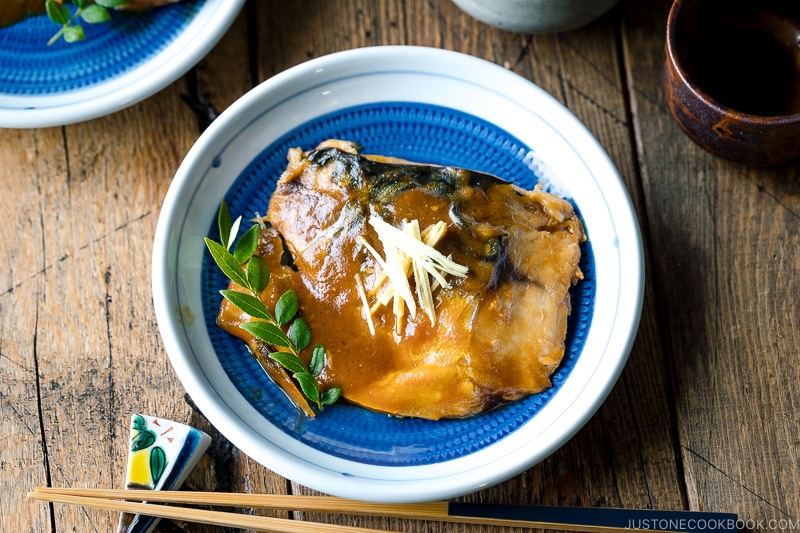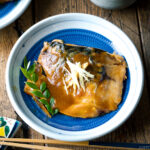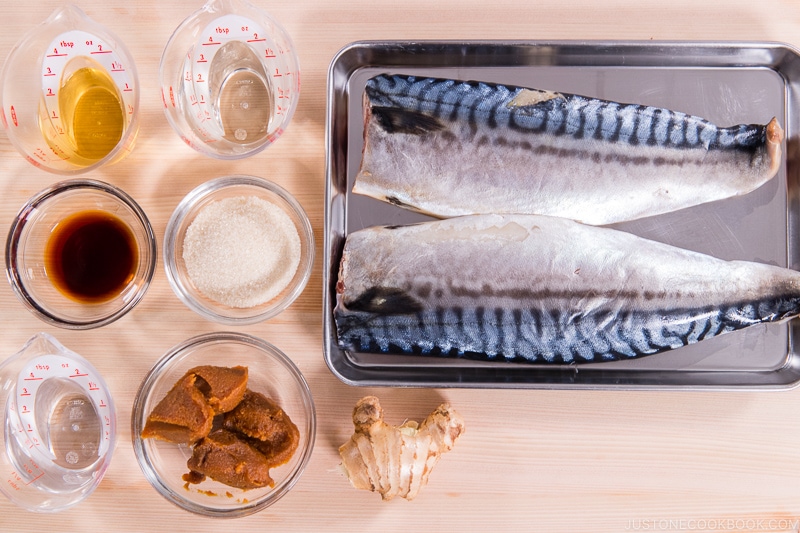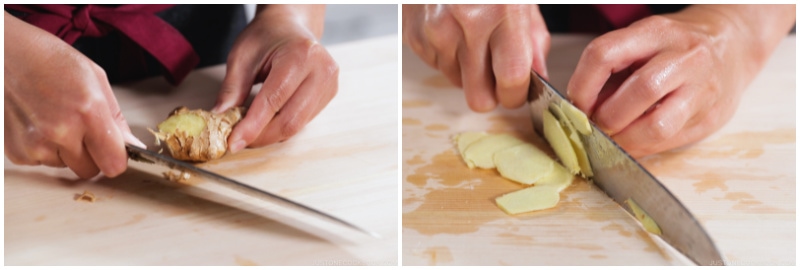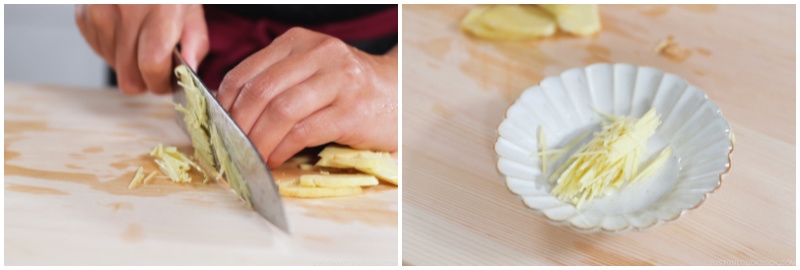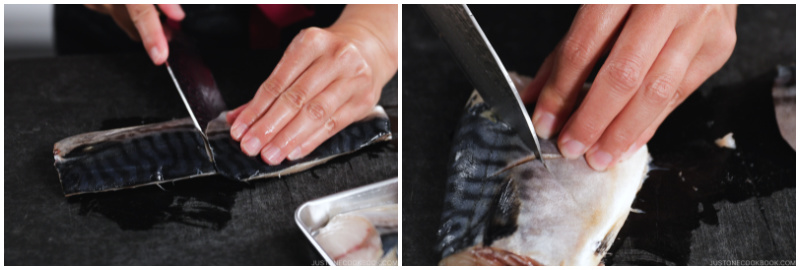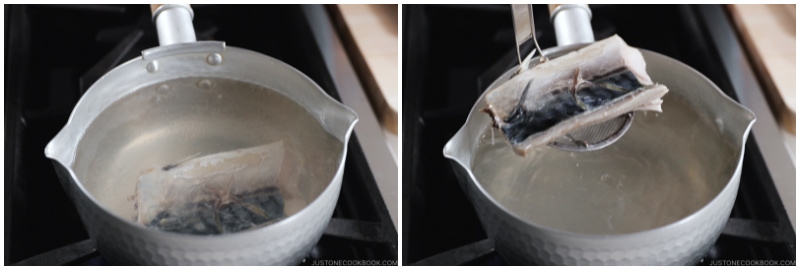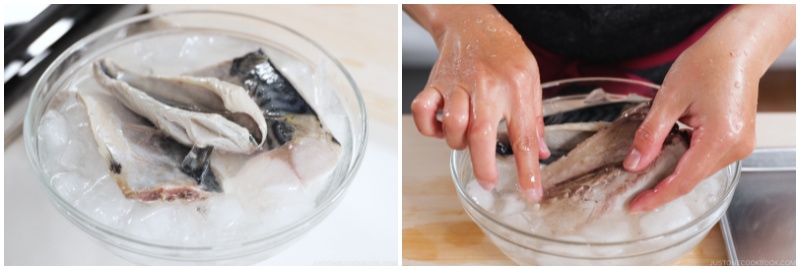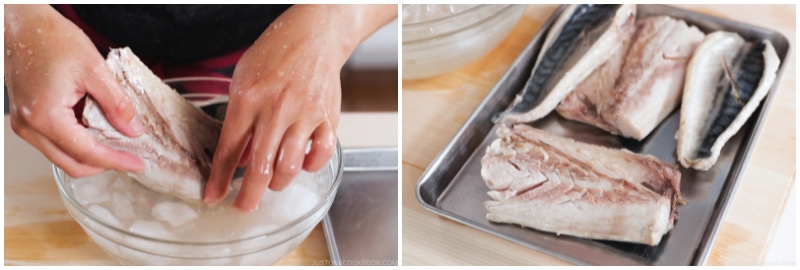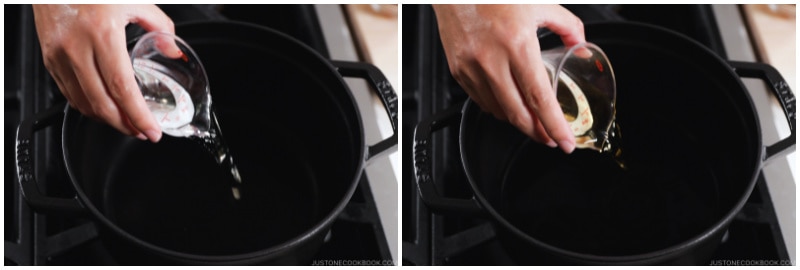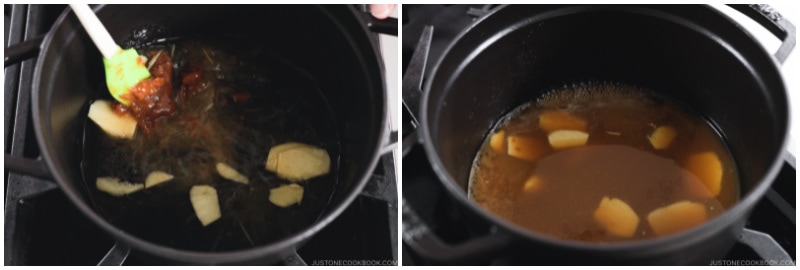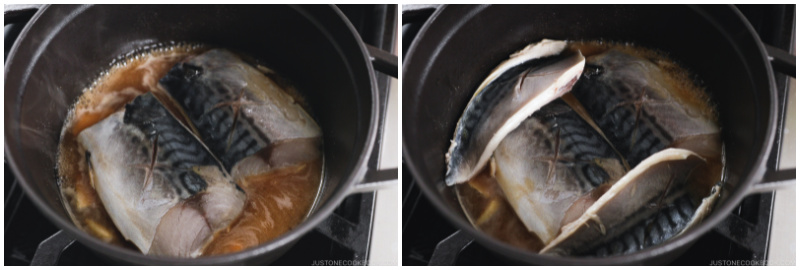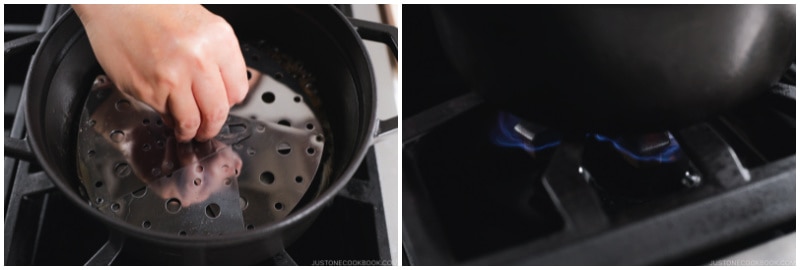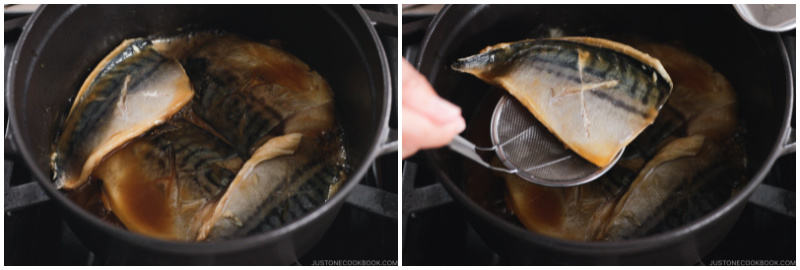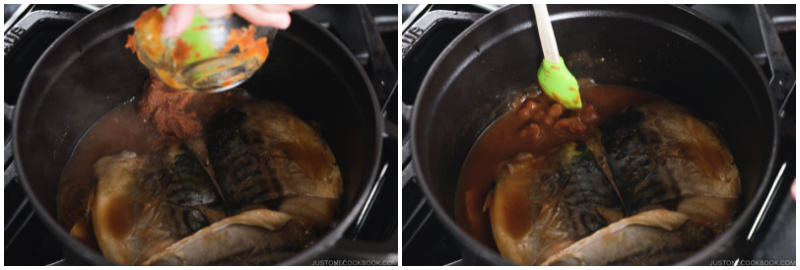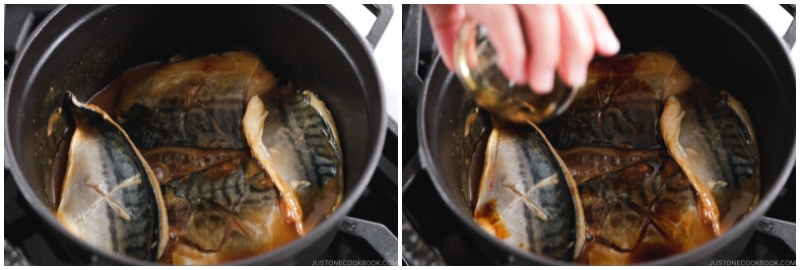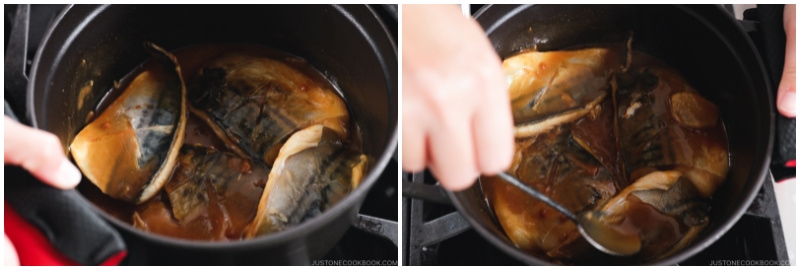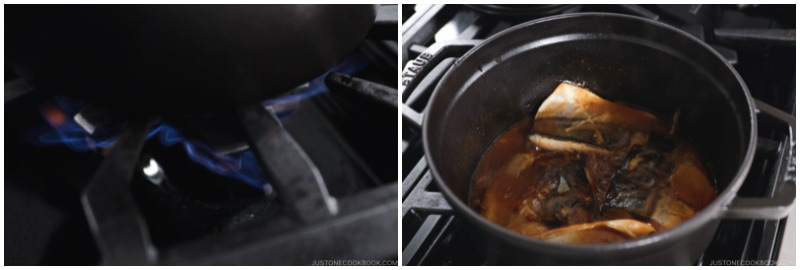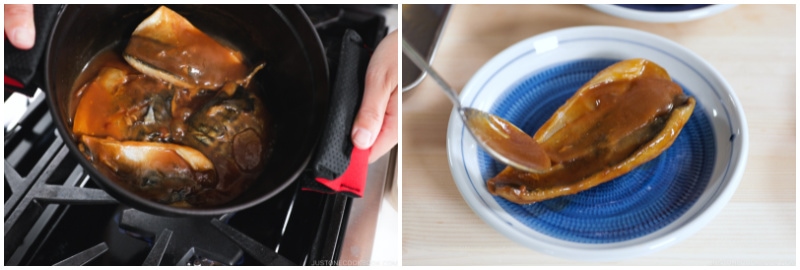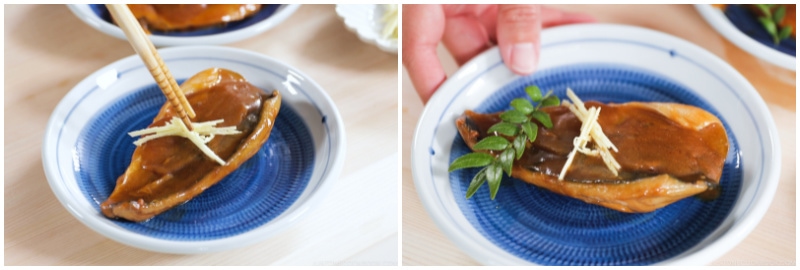Like many Japanese of my generation, I cannot go a week without a proper Japanese-style meal. A simple yet decent fish dish is a must on the menu. This Saba Misoni (鯖の味噌煮), basically mackerel simmered in miso, is a dish that never fails to satisfy my cravings. Let me show you how to make it with my easy recipe.
What is Saba Misoni?
Saba (鯖) means mackerel in Japanese. Misoni (味噌煮) or miso-ni is a cooking style where an ingredient is simmered in a miso-based sauce. This traditional dish is popular in Japanese home cooking as a good source of protein and for its savory flavors and easy preparation. Because of the stronger flavor, blue-backed fish (青身魚) typically goes well with miso-based sauce. This type of fish includes mackerel, horse mackerel, sardine, and Pacific saury (sanma). Also, any oily fish or fish scraps like tuna scraps are good with miso-based sauce. On the other hand, white-fleshed fish such as sea bream, yellowtail, sablefish, flatfish, or splendid alfonsino are suited to soy-based sauce.
Ingredients You’ll Need
mackerel (saba) fillets ginger Japanese condiments – sake, mirin, miso, soy sauce, and sugar
How To Make Saba Misoni
5 Tips on Making Saba Misoni
1. Blanch the mackerel first.
It’s important to clean the impurities (like blood) and remove any fishy odor and sliminess. This process is called shimofuri (霜降り) in Japanese, and it’s a common technique for preparing fish. The ice bath also firms up the flesh to help retain the flavor. Even with this extra step, the prep time for this dish is just 10 minutes.
2. Don’t skip the sake.
Sake not only removes the odor while evaporating alcohol, but it is also known to make the flesh of the fish plump, juicy, and tender.
3. Add the miso in 2 steps.
Miso loses its flavor when it’s cooked for a long time; therefore, add the second half of the miso mixture after simmering.
4. Tilt the pot to distribute the sauce.
When you add the miso for the second time along with soy sauce, the best way to mix all together is to gently tilt the pot around to distribute the sauce, instead of mixing with a ladle or utensil. That’s because Japanese simmered dishes are typically cooked with very little sauce with an otoshibuta (drop lid) on top. If you are new to this Japanese cooking tool, read my otoshibuta blog post where you can learn more about what it is, why we use it, where to buy, and how to make your own.
5. Let cool for 30 minutes.
Simmered foods taste the best when they are cooled and reheated. While cooling down, the ingredients absorb all the delicious savory flavors. I like to prepare the other dishes for the meal during this resting period. Even with this inactive cooling time, this dish takes a total time of just one hour.
What to Serve With Saba Misoni
This homestyle, rich-tasting mackerel could be the main star of your Ichiju Sansai traditional Japanese meal, but it’s also delicious with steamed rice alone. Any small side dishes such as pickles, soups, and salads make a welcome accompaniment. Here are some of my favorite sides that I like to serve to round out the meal:
Vegetable Miso Soup Miso Soup with Yuzu Kosho Gobo Salad (Burdock Root Salad) Cucumber Salad Tomato Myoga Salad Japanese Pickled Cabbage or Pickled Daikon
Other Delicious Fish Recipes on Just One Cookbook
Braised Alfonsino Cantonese Steamed Fish
Wish to learn more about Japanese cooking? Sign up for our free newsletter to receive cooking tips & recipe updates! And stay in touch with me on Facebook, Pinterest, YouTube, and Instagram. Editor’s Note: This post was originally published on June 8, 2011. The images, the blog content, and the recipe have been updated in June 2021. The video is also added in June 2021.

